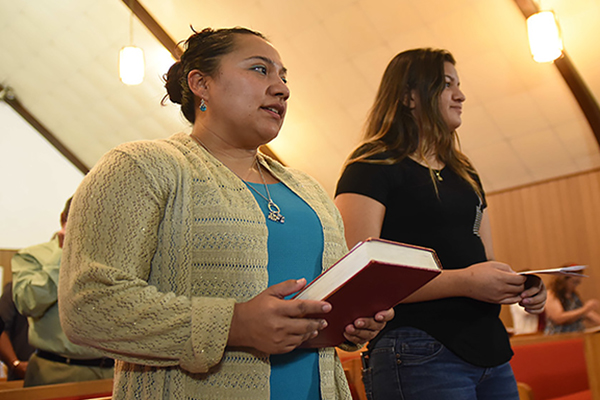by J. Dana Trent
I am a migraineur, a fancy term for people who sometimes feel as though ice picks are being driven into their brains. Nearly 38 million Americans suffer from migraines, creating a multibillion-dollar industry to treat them. My migraines can be caused by anything: light, food, smells, weather changes, hormone fluctuations, too much sleep, too little sleep, too much screen time, and intense conversations. Most recently, the status of my illness has progressed to chronic migraine, which means I spend half my life feeling like I have an ax in my head.
“Lighten up,” people suggested, chalking up my condition to perfectionism and spreading myself too thin. For them, the solution seemed easy, but I’d tried everything: relaxing, praying, meditating, over-the-counter medications, prescription medications, acupuncture, acupressure, yoga, herbal steam baths, ice therapy, heat therapy, and a meager diet of leaves and air. Cinnamon paste often covered my forehead, and I swallowed tablespoons of sriracha hot sauce with lemon water and pink Himalayan salt chaser. The peppermint oil roller tube was acceptable in public; a strange brown substance smeared on my face not so much.
 In the midst of my almost daily migraines, I continued to teach, to care for my mother who has dementia, and to provide volunteer pastoral care because I felt I had to. My chronic migraine diagnosis urged me to take on more. I didn’t want to be viewed by my students or colleagues as weak or compromised by my health. I put on a strong face, but all I wanted to do was hide in a cold lavender-infused basement.
In the midst of my almost daily migraines, I continued to teach, to care for my mother who has dementia, and to provide volunteer pastoral care because I felt I had to. My chronic migraine diagnosis urged me to take on more. I didn’t want to be viewed by my students or colleagues as weak or compromised by my health. I put on a strong face, but all I wanted to do was hide in a cold lavender-infused basement.
Medicine works best in tandem with balancing the human essentials: enough sleep, nutritious foods, and stable homelife. I needed to get my condition under control while seeking meaningful relationships with God and others. The symptoms—migraines, depression, busyness—were indications of something larger. The chronic condition that dictated my days became an invitation to find peace and purpose beyond deadlines and success.
My migraines had always been less severe during seasons of my life when I was on the correct medication, calm, and connected—more attuned to my soul, God, and community. I remembered times when I wasn’t so stressed—when weekly replenishment hadn’t seemed so out of reach. Two decades ago, when the world was much different, time had felt slow and limitless. I was a teenager with no migraines; I spent many guilt-free Sundays with no worldly goal in sight, filling my hours with daydreaming, reading, resting, praising, praying, gathering, and moving toward the Divine. Time had been my most abundant resource. Back then, I seemed to understand the medicinal value of free time. My sabbath practice came easily—from singing Jesus hymns in worship to gushing over youth-group boys. I was told to keep the sabbath and I obliged, but I never knew why I did it.
There is often an inciting incident that slows us down and calls us to sabbath, whether we recognize it or not. It’s something that knocks us off our track, a signal to stress less—or else—and to depend upon something that transcends us. But we don’t need a crisis to get into this club.
It’s the why of a thing that keeps it relevant, which is the reason I dropped the sabbath-as-joy habit as soon as I hit college. Though I had left an authentic sabbath practice behind, the need to ask why arrived nearly twenty years later, thanks to a chronic disease that requires significant medical interventions.
But there’s no need to wait until the string quartet accompanies our sinking Titanic. Getting to the crux of sabbath will rescue us before we drown.
 Resting means confronting the itchiness of wanting to keep our bodies (and minds) moving. Worship means finding a place in which we can really concentrate on devotion—and it’s amazing how much we (myself included) are unwilling to sacrifice an hour to spend in God’s house. Community means stepping out of comfort zones to risk rejection and navigate complex relationship dynamics in order to spend quality time together—whether it’s over dinner or in service to a greater good.
Resting means confronting the itchiness of wanting to keep our bodies (and minds) moving. Worship means finding a place in which we can really concentrate on devotion—and it’s amazing how much we (myself included) are unwilling to sacrifice an hour to spend in God’s house. Community means stepping out of comfort zones to risk rejection and navigate complex relationship dynamics in order to spend quality time together—whether it’s over dinner or in service to a greater good.
My fledgling sabbaths are still not where I want them to be, but I remind myself not to keep score. Instead, I have realized how my new sabbaths resemble those of my youth, minus the braces and teenage angst. My intention and awareness have shifted toward noticing God’s presence in stillness, devotion, and community. I may not hole up in a dark room for twenty-four hours and meditate on scriptures—I wouldn’t even recommend that—but I know that I can’t tend to the sacred garden within and around me without stepping out of everyday life.
I’m a big fan of “sabbath moments,” which are sacred glimpses in regular time—like a rainbow on a Thursday afternoon or a conversation with a close friend. Sabbath moments were a good place to start. Once I felt ready to stretch those moments into an hour, an afternoon, or a day, I did. I put my phone away. I napped. I attended worship. I walked slowly in nature. I read. I meditated. I prayed. Most of all, I practiced humility: I am not the Creator; this world will not fall apart without me.
I learned to learn into wonder and awe. My life depended on it, for sabbath’s sake.
–This is an adapted excerpt used with permission from For Sabbath’s Sake: Embracing Your Need for Rest, Worship, and Community, © Upper Room Books 2017. Learn more and purchase here.
The Rev. J. Dana Trent is a graduate of Duke Divinity School and professor of World Religions and Critical Thinking at Wake Tech Community College. An ordained Baptist minister and former hospital chaplain, she has been featured on Time.com, Religion News Service, Religion Dispatches, as well as in Sojourners and The Christian Century. Her fourth book, Dessert First: Preparing for Death While Savoring Life releases in September 2019 from Chalice Press. It chronicles lessons on life, death, and grief from the bedsides of the dying–including her mother. Dana is also the award-winning author of books on holistic wellness and multi-faith spiritual practices: One Breath at a Time: A Skeptic’s Guide to Christian Meditation ; For Sabbath’s Sake: Embracing Your Need for Rest, Worship, and Community ; and Saffron Cross: The Unlikely Story of How a Christian Minister Married a Hindu Monk. She is a certified group fitness instructor and teaches for the YMCA. She and her husband Fred are longtime vegetarians and live in Raleigh, NC, with their orange tabby cat.

